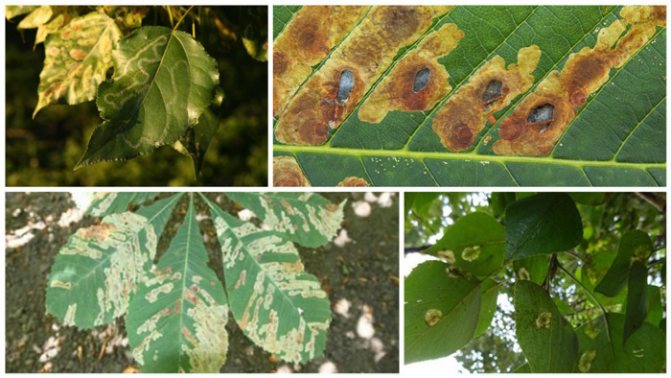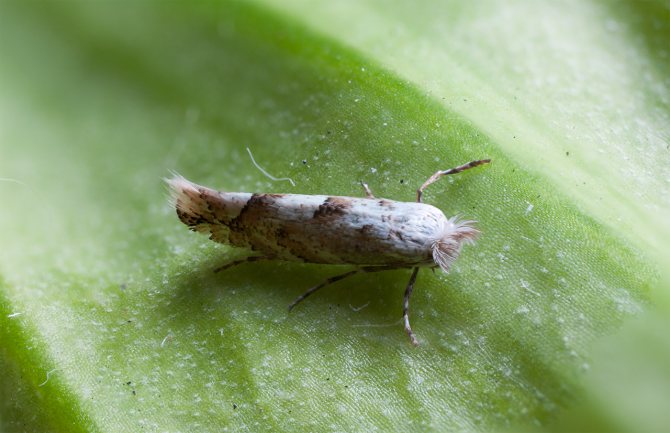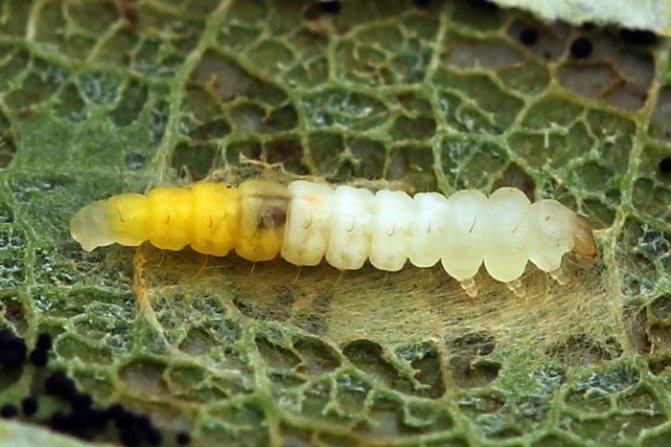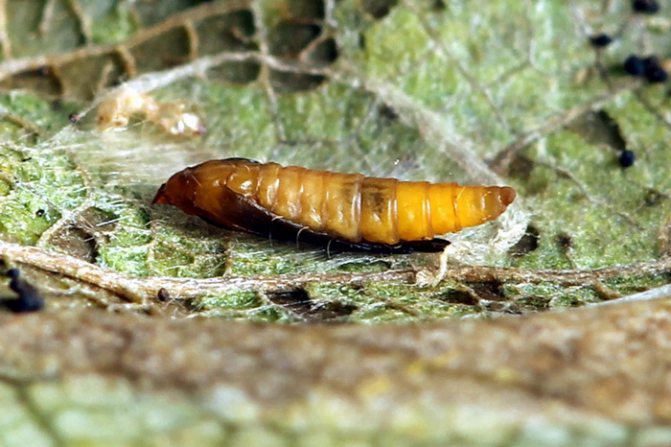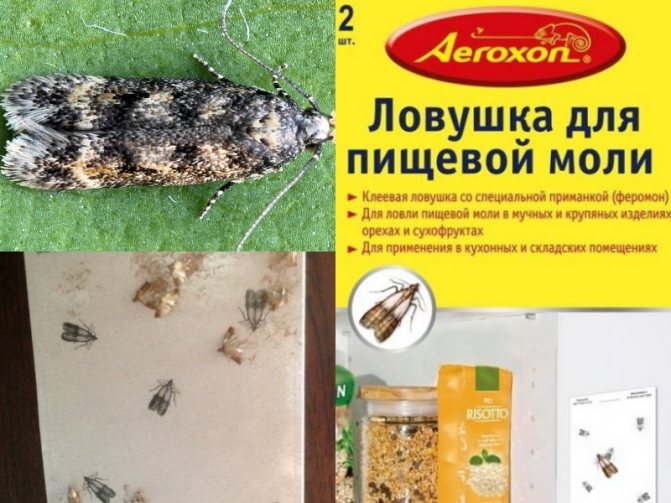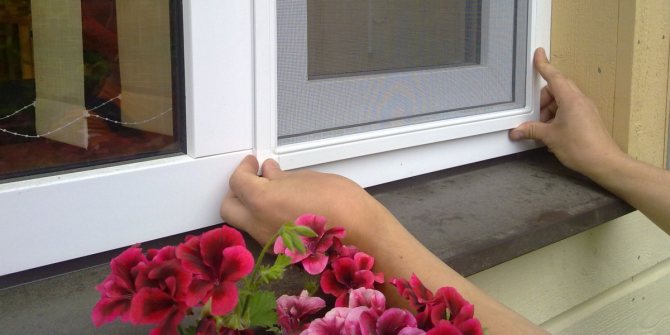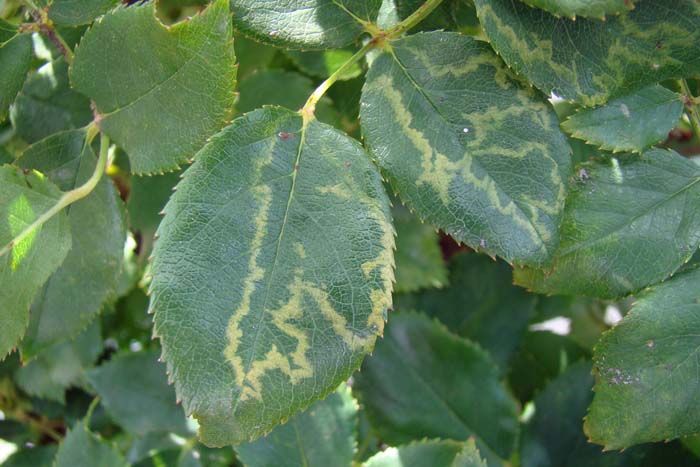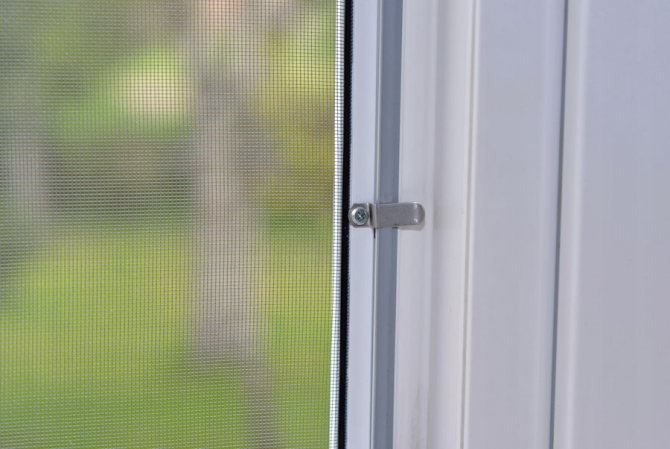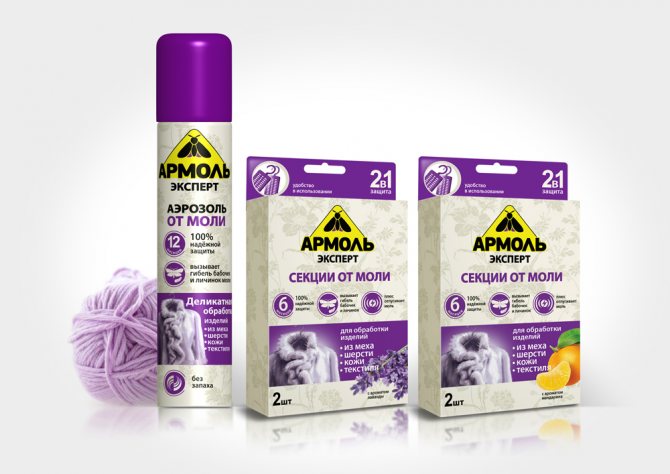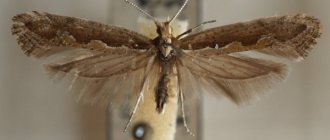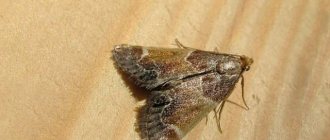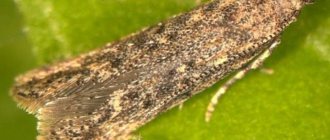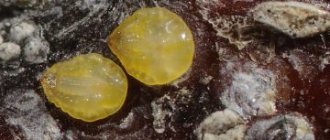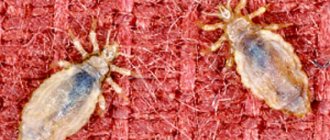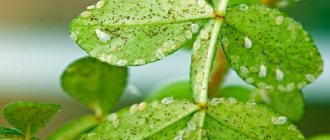From time to time, with the arrival of summer, residents of country houses and city apartments are attacked by poplar moth, which creates serious discomfort, but few know how to get rid of it. Insects are widespread in the European part of Russia, their mass reproduction is observed in years with mild winters and cool summers. Heat, on the other hand, has a detrimental effect on the larvae.
The mole got its name because of the period of distribution. Individuals can be seen in large numbers during the flowering of the poplar. The female's eggs are left in the fluff, which is spread by the wind over long distances.
In the dark, poplar moths are easiest to spot. When the sun goes down and the daytime summer heat subsides, individuals fly into the light in apartments. Insects accumulate on the ceiling, clinging to furniture and other interior items. People are forced to keep the windows closed in order to get rid of the massive invasion of winged individuals. Poplar moth is not dangerous to humans: it does not tolerate pathogens of dangerous infections, but leaves dark spots on the surface of furniture, which are very difficult to get rid of. Small insects are massively hammered into kitchen appliances and lighting fixtures, spoiling the appearance. It is dangerous only if people with allergies live in the apartment.
Larvae of urban vegetation do much more harm. Moth caterpillars feed on perennial poplar, aspen, linden, maple. They can also damage fruit trees. Whitish blotches in chrysanthemums and violets are winding passages, indicating that poplar moth larvae have visited the plants. Leaves that were damaged during the attack of caterpillars cannot photosynthesize, turn yellow and fall off. This negatively affects the yield and growth of fruit crops and trees.
What is harmful motley
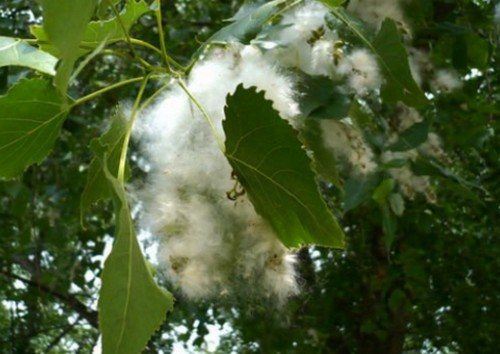
The content of the article
- What is harmful motley
- How to identify a poplar moth
- In the conditions of the city
- In the apartment
This moth is considered one of the worst pests of urban green spaces and requires timely application of measures, otherwise it can multiply so that there will be no leaves on the trees at all.
If we hear about the clothes moth all the time, then very few people know about the existence of poplar (poplar). This is not surprising, since most moles are very similar to each other, and being able to distinguish them is the task of professionals. An ordinary person is primarily interested in whether an insect can harm or is it harmless, and if it is a pest, then what it eats and how it can be dealt with.
The conversation about poplar moth should be divided into two directions. The first concerns the ecology in general and what threatens the invasion of variegated trees and shrubs. This part will be of interest to summer residents and residents of the private sector.
But since poplar moth penetrates into apartments, people living in multi-storey buildings also suffer from it, and most interestingly, in most cases they do not even know about it. Together with the fluff, the speckle gets into the apartments, where it becomes the cause of damage to property.
She is not interested in the contents of the cabinets; there is no need to fear for the safety of the fur. She does not eat cereals, although she can lay eggs in them. She is attracted to technology. Not in the sense of food. She won't eat wires and other iron stuffing of TVs and computers.
The larvae are not limited to poplars:
- They eat apple and pear leaves with appetite.
- In June, when poplar fluff flies, you need to pay special attention to cucumbers. Since they can also become an object of eating by caterpillars, they are covered with non-woven material.
- Certain green crops, such as lettuce, are at risk.
- Sometimes attacks roses.
What harm does
Poplar moth is not a threat to humans or pets.
Individuals that enter living quarters do not claim food or clothing and are not carriers of diseases.
Basically, their presence in the house or apartment simply makes the owners nervous, so they want to get rid of such unnamed guests as soon as possible.
Unwittingly, sometimes speckled flowers get into electrical appliances, chandeliers, floor lamps, causing malfunctions or getting them dirty. In addition, such insects leave stains on pieces of furniture or curtains, and it is not at all easy to give things their original appearance.
What eats
The poplar moth (speckled moth) has such a name for a reason, given what this pest feeds on. Caterpillars of this pest love to profit from poplar leaves. And adults are also ready to eat from the trunk of poplars.


But poplars are not the only plant that may be of interest to the variegated. She may well eat from fruit trees and shrubs, flower beds and vegetable gardens.
If, with the arrival of winter, the moth finds itself far from living quarters, then the fallen leaves and bark of the poplar become its refuge.
Signs of a damaged tree
The poplar miner moth is dangerous because the pests begin to eat the leaves, so they fall off ahead of time, and the bare branches freeze. This leads to the death of an entire tree. The fact that the tree is damaged is well visualized by the characteristic marks on the leaves.
This type of moth affects different plants in different ways:
- intertwining passages are observed on apple leaves;
- pear leaves are covered with beige or brown passages;
- when examining the leaves of a rose, numerous puncture points and ornate passages are visualized;
- for rhododendrons, it is characteristic that the leaf looks worn down over the entire area;
- on the leaves of flowers (violets, chrysanthemums), cucumbers and lettuce, winding thin passages with white blotches are observed.
The older the plant, the harder it is to withstand the attack of the motley. When detecting primary signs of damage, it is important to take action, otherwise you can lose many of the local flora.
How to identify a poplar moth
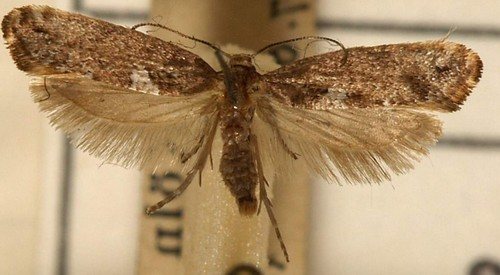

During the flowering of poplars, many noticed the incredible activity of the night moths. It seems that they flock under the lampshade from all over the area. In the morning, the ceiling of the country veranda and the walls of the house are literally covered with small gray butterflies. In urban settings, butterflies fill balconies and loggias. This is the nocturnal miner.
Features of the view:
- The life of a butterfly is limited to only a few days, and in 72 hours it is necessary to have time to take care of the offspring.
- The poplar moth lays eggs once a day.
- The larvae emerging from the eggs develop very quickly.
- They are particularly gluttonous and work together. They can completely eat the leaf, and during the years of the invasion of these insects, there were cases of complete dropping of foliage by poplars.
Aspens and maples suffer from poplar moths.
The larvae bite into the pulp of the foliage, leaving behind something that looks like a minefield, which is why or and got the name "miners". Often after their meal on the leaves there are marks exceeding 1 cm in diameter.
If a poplar moth does not lay eggs on a poplar, but on another tree, they may die.
Their mass death is noted just in those years when an anomalous invasion of these insects is observed. Those individuals who, for some reason, do not get a place on poplars or their close relatives - aspens, lose their offspring.
Despite their small size, moth larvae can seriously affect landscaping. The length of the marshmallow larva barely reaches 5 mm, but there are many of them, and they eat almost continuously.


Since in many cities it is poplar that is used in landscaping, if you do not fight with moths, you can be left completely without greenery and shade. The survival rate of the tree in winter is called into question. The foliage affected by the larvae is discarded much earlier than the term, and as a result, the tree does not have time to prepare for wintering. It can even die, at best - only those branches that were bare in the summer will freeze. Poplar moth is especially dangerous for old trees.
General characteristics of the insect
Poplar moth or Lithocolletis populifoliella Tr. represents small white butterflies with small black dots on the wings. The appearance of this moth after the wintering stage occurs in late April or early May. The wingspan of an adult pest butterfly is about seven millimeters. The moth's narrow wings have a characteristic fringe.
The color of the butterfly is inconspicuous, and if the front wings have some variegation, then the hind wings are characterized by monotony and brown color. The insect at the caterpillar stage practically does not stand out against the background of tree foliage and has a light yellow, almost white body color. The track length does not exceed five millimeters.


The narrow wings of the moth have a characteristic fringe.
In the conditions of the city
In the fight against motley, not only insecticides are used, but also barrier methods. In urban conditions, chemical remedies and glue traps are the most effective, but one must take into account that what is suitable for moth butterflies is completely ineffective for larvae and eggs.
The use of pesticides is directed at the larvae only. They are used to treat crowns and near-trunk soil.
For all its effectiveness, the use of pesticides is undesirable for the reason that they harm the environment and do not affect butterflies and pupae.
Paraffin-based products are not as toxic. With their help, you can destroy the eggs of the pest.
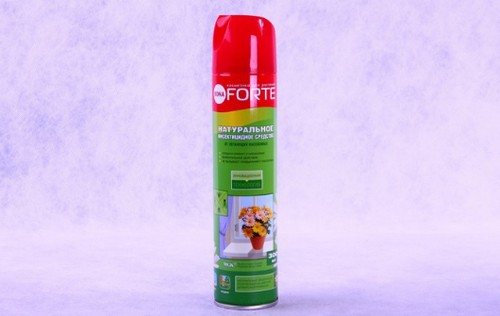

The most environmentally friendly drugs are considered to be based on pyrethrum. They are produced in the form of a powder and are made from plant materials, or rather, from Dalmatian chamomile. Feverfew is safe for humans, birds and animals, so it can be used in densely populated areas and private backyards. But they need to process plants often, at least once a week.
Another way to deal with poplar moth is sanitary pruning of tree crowns. Drastic measures - complete cutting of poplars. In some cities, they are systematically replaced by other trees that are less attractive to pests. If there is no mass infection with poplar moth, then the treatment is not carried out.
Signs of plant damage
The main sign of a moth's presence on fruit trees and other plants is the formation of pits on the leaves:
- On the leaves of an apple tree, it is a serpentine or round shape;
- Beige and brown passages are visible on pear leaves;
- The leaves of roses have small holes and zigzag passages;
- Violets and lettuce show light dots and passages;
- Chrysanthemum leaves have light zigzag passages;
- Cucumber leaves will be gnawed with white dots.
Therefore, as soon as you notice signs of the presence of a moth, you must immediately begin to fight it.
A source
In the apartment
The easiest and most effective way that prevents moths from entering the apartment is mosquito nets.They serve as a barrier that insects cannot overcome.
If, nevertheless, butterflies have penetrated into the home, then the question of how to get rid of the poplar moth in the apartment is decided by the same fumigators that we use for any flying insects. Aerosols help against motley, but since there is no particular harm from it, you can do without the use of chemistry.
In the morning, butterflies are usually found on the window, so they can be easily collected with a vacuum cleaner. It is advisable to empty the dust container immediately. If insects annoy in the gazebo, smoldering spirals work well against them, but they are harmful to humans, so they are often not recommended to use.
Beginning in September, moth butterflies are found less and less, and with the onset of cold weather they go to winter, hiding in the cracks of houses and hiding in the folds of the bark of trees.
Folk remedies
Before using harmful chemicals, it is worth trying to remove insects from the house using safe methods - folk. Methods need to be studied in advance, choosing the right one for yourself. It is worth remembering that folk remedies will not kill, but only scare away the speck, so they need to be used in combination with mechanical methods (for example, using a vacuum cleaner).
Various plants and herbs act in a depressing way on the speck. You can make a wreath or broom from these plants:
- sagebrush;
- tansy;
- lavender;
- rosemary;
- mandarin.
Herbs can be put in cloth bags and scattered around the apartment. If there are too many moths, this method will not help.
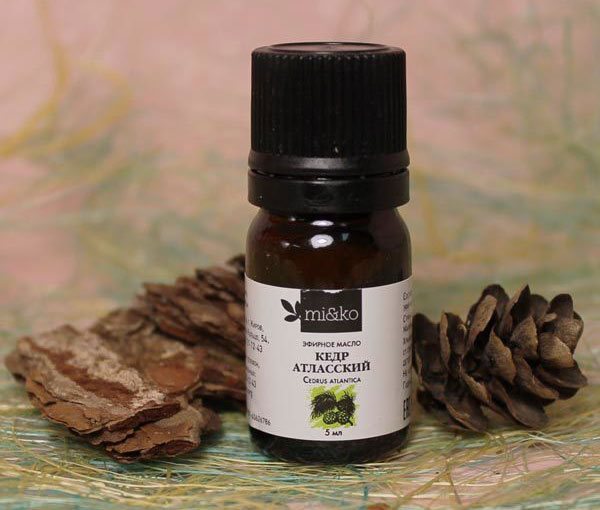

Poplar moth does not like the smell of cedarwood essential oil, so it is used to make home remedies
The smells of essential oils - cedar, wormwood, eucalyptus, tea tree - have a repellent effect. They can be used to fill the phyto-barrier and place it in the place of the greatest accumulation of moths. The capacity needs to be renewed every month. This will not only get rid of poplar moths, but also give the room a pleasant aroma. You can spread dry lavender branches, strawberry-scented soap, orange peels in dark places.
Previously, housewives made motley cubes, spreading them throughout the apartment.
To prepare them you will need:
- a few drops of lemon oil;
- detailed cedar bark - 115 g;
- myrrh - 115 g;
- cinnamon - 115 g;
- soap powder - 35 g;
- a few drops of alcohol;
- ground black pepper - 115 g.
The ingredients are mixed, alcohol is added until a sticky mass is formed. From the resulting composition, cubes are made, which are laid out behind curtains, near windows, and household appliances.
An easier way to make cubes is to take 500 g of alabaster, add 50 g of ground black pepper, pour 40 g of naphthalene. Alcohol is added to the mixture until a ball is formed. They are scattered around the dwelling.
An excellent effect is given by a sachet for moths. To make it, you need to take 500 g of lavender, 1.9 kg of camphor, 30 ml of lavender ether. They are mixed, cut into small pieces and placed in boxes or bags.
You can make paper with an insect repellent smell.
To do this, you need to mix:
We advise you to read:
Dealing with sweat odor
- 25 g camphor;
- 15 ml of cedarwood oil;
- 25 g phenol;
- 350 ml of gasoline or kerosene.
When preparing the mixture, it is necessary to observe safety precautions, as it is flammable. Some components are harmful to pets, so it is better to give pets to someone for supervision during the procedure.
If motley is seen on indoor plants, they need to be treated. You can use a laundry soap solution. Bits of soap with the smell of citrus, mignonette, lily of the valley can be spread out in places where moths are seen.
The insect does not like the smell of cedar, lavender and cloves, lemon, orange. If you buy flavors with these flavors, there will be significantly fewer individuals. You can soak tampons with essential oils of plants, and spread them in inconspicuous places of the apartment.You can use fresh fruit peels instead of orange essential oil. As they dry, about once a month, they will need to be replaced with new ones.
Houseplants will help drive the moth away. Insects cannot stand the neighborhood with geraniums, tobacco and nettles, so it is advisable to put them on windowsills. The smell of leaves will scare away unexpected guests - pests will not be able to penetrate the house through the windows.
Tobacco in a cloth bag is another effective remedy for repelling poplar moths. It needs to be laid out on the windowsills and on the floor. Sensing a pungent smell, insects will not stay in the apartment for a long time.
Dried chestnuts will also help you forget about an unpleasant problem. They are laid out in places where moths are seen.
Important! Using folk remedies, you need to remember that they help scare off adult moths, you will need to get rid of the larvae using more radical methods.
Cabbage moth
Relatively small representatives of this species of moth (15 millimeters in wingspan) have dirty yellow upper wings with dark stripes and white edges, gray lower wings. Head and dorsum light, almost white. The summer begins in the spring. Females place eggs in several pieces on the foliage of cruciferous crops: cabbage, horseradish, and rape.
The larvae are greenish in color, the heads are brown. They eat young foliage throughout July, pupating right there at the end of the month. The second wave of summer comes towards the end of summer. In the autumn months, a new brood of larvae matures. By winter, they pupate.
Clothes moth
Representatives of this type of moth are much larger than fur pests: the wingspan is on average 20 millimeters. The wings have an interesting color: the upper pair at the base is dark purple and light beige at the edges, bright spots are noticeable at the ends. The lower wings are light and framed with thick hairs. The body and antennae are light brown.
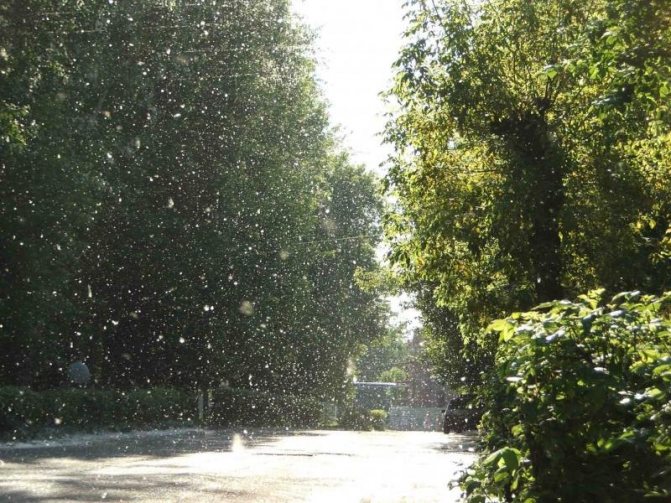

Caterpillars are outwardly similar to fur coats. The dressing moth lives inside objects made of drape and woolen materials. Moreover, individuals make their way as deep as possible into the material and eat it from the inside, gnawing out large spaces. Sometimes it remains invisible from the outside.
Grain moth
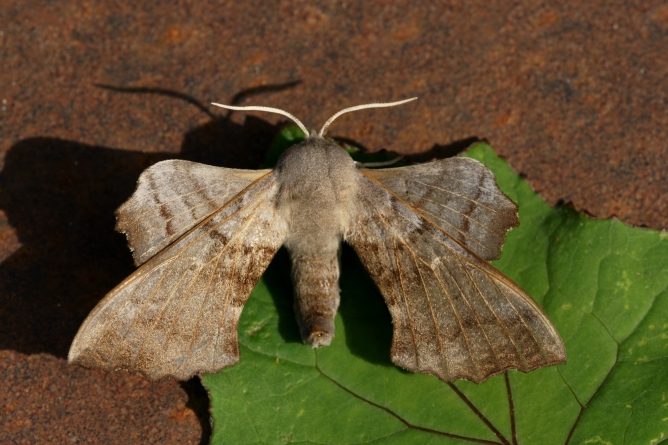

Small representatives of this species of moth are only 13 millimeters long with their wings spread. Insects have a variegated yellow-brown color and short black whiskers. In appearance, butterflies look shaggy due to the hairs sticking out in different directions - they cover the whole body.
The variety lives in the middle of our country. Summer occurs in August, at the same time eggs are laid on winter seedlings. During the growth period, the larvae feed on the contents of the stalks, eating away the entire core. In the same place, individuals spend the winter, continuing to eat the culture with the onset of the first heat. You can notice this activity on the drying parts of the spikelets. Pupation occurs between foliage and occurs at the end of June.
In addition to agricultural land and barns, a grain pest successfully attacks residential apartments. Flying dark butterflies in the kitchen are a clear sign. Within the kitchen, the pest is interested in stocks of cereals, flour, grain, dried fruits, and sometimes even pet food. Eggs are laid directly in the listed products. The larvae that appear begin to feed on reserves, leaving excrement in them. It is not safe to eat contaminated foods.
Prophylaxis
There are a number of recommendations, following which, you will protect yourself from infection:
- Store bulk products only in tightly closed containers or jars, as parasites can gnaw through polyethylene.
- When sending warm clothes for storage in the closet, take care of their cleanliness. Pests are primarily attracted by stale clothing that smells of sweat or dirt. It is better to store items in cases or bags. Once every couple of months, clothing should be removed and ventilated.
- Things that are attractive to pests, such as fur coats and carpets, are best treated with a pest control before storage. These types of remedies tend to protect things for several months.
- Ventilate and clean your home regularly. Cleanliness and good air circulation is a pest-friendly environment. When vacuuming, vacuum the crevices in the floor, between baseboards and walls, etc., as carefully as possible. In such hard-to-reach places, larvae are often found.
- Individuals do not tolerate typographic odors. So you can safely keep things wrapped in newspaper sheets.
Furniture moth
This variety is distinguished by a catchy golden color. The head is yellow. The bases of the upper wings are dark red. The species (furniture moth) was formed not only due to the way of life, but also due to the special structure of the body: the head is equipped with peculiar labial tentacles.
Furniture moths eat furniture, starting with the fluffy stuffing. And only approaching pupation, they get out onto the surface of the furniture, where they continue to destroy the material. Interestingly, they move along the pattern on the fabric. Pupation usually occurs on the underside of armchairs, sofas, or chairs. If you look there some time after the infection of the dwelling, you can stumble upon vast nests filled with light-colored pupae.
In the cold season, the larval stage lasts up to six months, while in the summer this process takes only a couple of months. Pupation begins at the end of winter. Years fall on all three spring months. Re-years occurs in the second and third months of summer.
Common moth
This is the most familiar species, which we already started talking about at the beginning of the article. It is she who is greedy for woolen and fur things. It should be added that caterpillars can assimilate not only keratin, but also technical felt, feathers, leather, book spines, antiques and even dry meat and fish. A variety of objects in the apartment are being attacked.
Feeling the proximity of food, insects are able to gnaw through various obstacles made of other materials: synthetics, silk, cotton.
During the life cycle, an individual undergoes 3 stages: an egg, a caterpillar, a pupa, a butterfly. We can only observe adult butterflies slowly flying around the house. The life span, starting from the egg stage, reaches 2 months.
Obviously, the main struggle should not be with butterflies, but with their eggs, because it is from them that caterpillars appear, which actively spoil things by getting food. One clutch of a female has up to a hundred eggs.
A characteristic feature of parasites is their dislike for sunlight, so they try to stay in the shade. In the apartment, secluded dark places become a refuge. The wardrobe is a moth's paradise. It is always dark there and there is something to profit from. This applies to all stages of the individual: females live in dark corners, where they reproduce offspring, which also likes to be in the dark and safety.


If the caterpillars are born in a closet with clothes or next to another food source, they do not need to change their location. They simply remain in some kind of woolen sweater and spend the entire larval stage there, provided with constant food. It is absolutely impossible to notice their destructive activity if, for example, it is summer now, and warm things are in storage.
Later in the article we will turn to more “highly specialized” species of moths that differ in appearance and prefer to eat specific types of materials and products.
How to proceed?
If there is a poplar moth - how to fight it and there must also be proven methods. In reality, this is not the case at all in this example. There is no such problem as a multipurpose effective conclusion.
- Experts first of all offer an absolute method of fighting - the global cutting of poplars and replacing them with trees that are the most resistant to this pest.
- Public works are involved in prevention events by treating poplar crowns and soil with special chemicals.
- And once you let history take its course, then of course this insect will disappear, just with the onset of profound frosts.
Ate poplar throws off such leaves, it means the tree is infected with moths
The options listed a little above are a dream that someone else will think of the problem with pesky insects. After all, as we know, the proceeds of the drowning are the business of the drowning hands themselves, thanks to this, it will be possible to eliminate the unpleasantness in their own personal dwelling autonomously.
Confessing such an alternative, the conclusion of the problem - how to get rid of the poplar moth, should be approached in a complex way:
- For example, paraffin-based products are used to kill the eggs of this parasite.
- If we are talking about a greenhouse, then it is easier to act there, they inhabit a natural insect - a rider.
- If you spray the leaves with substances with the connection of pyrethrum, in addition, repeatedly with a small interval of the day, then the leaves will be spared.
- To free herself from over-aged sexually mature women, it is worth using sticky traps. Funds for feverfew are still used, but their return is somewhat lower.
- It is advisable to use potent poisons in places that are heavily charged - the usual observance of TB. It will take at least a fifth operation - much better the sixth, with a frequency of 3-5 working days. In such active processing there is a need for the extermination of moth larvae, but over-aged ladies die at once.
Potato moth
Individuals are quite large - 15-20 millimeters in wingspan. The upper wings are gray with dark streaks and yellowish spots. The lower ones are brown in color and down at the edges.
The body of caterpillars can be green, yellow, gray or pink in color. The length of the larvae reaches 15 millimeters. The larvae feed on nightshade crops: tomatoes, potatoes, eggplants. The fruits of the plants themselves are eaten.
A healthy female is capable of laying 150-200 eggs, producing from 5 to 15 broods.
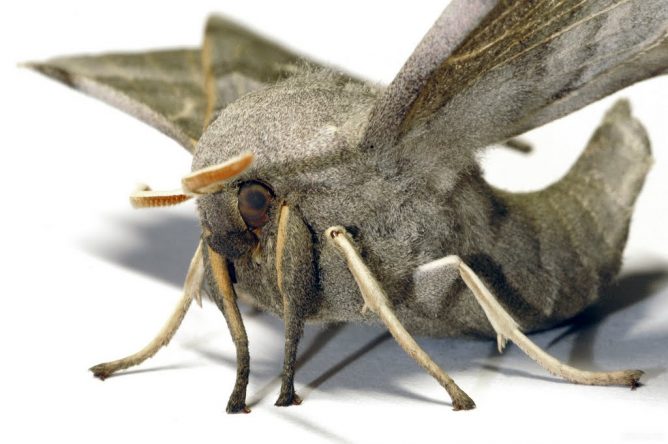

Potato moth is often found in winter harvesting of vegetables. Now we are not about seaming, not to be confused, but about bags of potatoes, onions and other vegetables purchased for harvest at the end of the season. It often happens that we do not go through the purchased product, but simply put the bags in the pantry or, say, on the balcony, where a huge number of insects appear. Eating our products, the potato moth feels great in such conditions, grows and reproduces.
Potato moth is an insect that can get to food supplies and destroy them
When it is found, a huge amount of food is already spoiled, some even go straight to the trash. But, if you feel sorry for your own funds, and there is simply no desire to observe insects in the house, you can always prepare in advance for a meeting with a moth.
To do this, you will need to properly prepare your vegetable storage. Cleaning, drying, disinfection is what is needed. It is also worthwhile to clean vegetables from obvious signs of dirt or pests in time and dry them well. After, send the products for storage.
How to deal with potato moth and what preventive measures can be taken?


